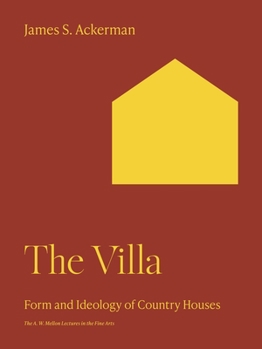The Villa: Form and Ideology of Country Houses (A W Mellon Lectures in the Fine Arts)
Select Format
Select Condition 
Book Overview
A cl assic account of the villa--from ancient Rome to the twentieth century--by "the preeminent American scholar of Italian Renaissance architecture" ( Architect's Newspaper ) In The Villa , James Ackerman, author of classic studies of Palladio and Michelangelo, discusses villa building in Western countries at various times and places from ancient Rome to twentieth-century France and America. In this wide-ranging book, he illuminates such topics as ancient Roman villas, the early villas of the Medici, the Palladian villa in England, and the modern villas of Frank Lloyd Wright and Le Corbusier. Ackerman uses the phenomenon of the "country place" as a focus for examining the relationships between urban and rural life, between building and the natural environment, and between architectural design and social, cultural, economic, and political forces. "The villa," he reminds us, "accommodates a fantasy which is impervious to reality" through the ages it has been pleasure that has distinguished the villa estate from the farm. Since their earliest representation in Roman literature, the coveted country delights of relaxation, healthy living, hunting, reading, and conversation with friends have been an ideological construct of those who could afford to escape the city, often by expropriating rural land. Farmers and peasants usually don't see the country as an idyllic location, but city dwellers have frequently idealized country life and wanted to own property where it could be enjoyed. Hence the villa--which, unlike the farmhouse, typically asserts its modernity and its status as a product of the architect's imagination.
Format:Paperback
Language:English
ISBN:0691002959
ISBN13:9780691002958
Release Date:February 1993
Publisher:Princeton University Press
Length:304 Pages
Weight:2.30 lbs.
Dimensions:0.8" x 7.5" x 10.0"
Customer Reviews
0 rating





